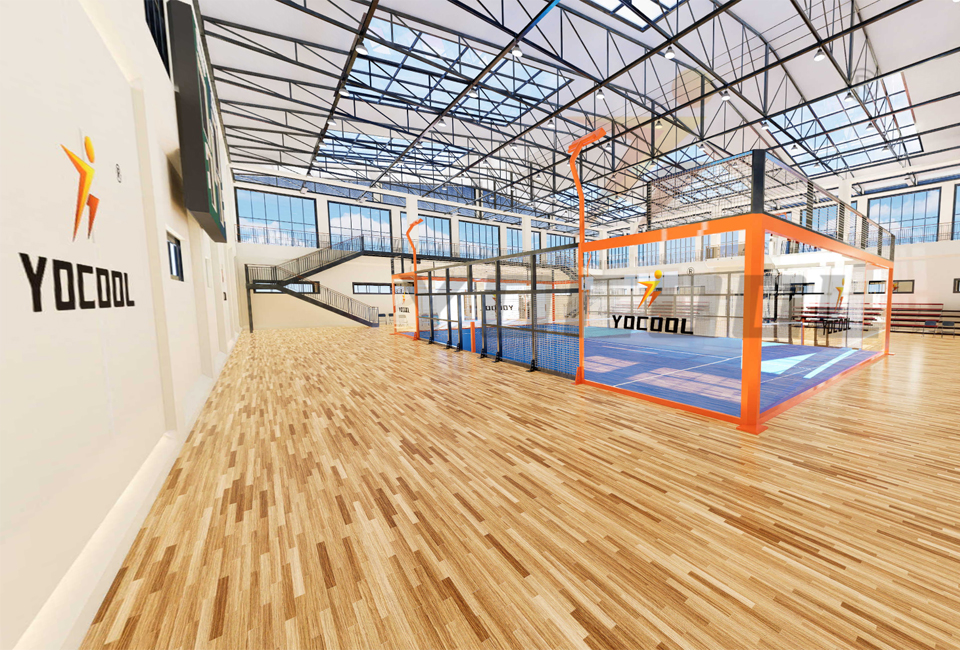

Padel and Tennis A Comparative Exploration of Two Dynamic Sports
In the realm of racquet sports, padel and tennis stand out for their unique characteristics and growing popularity across the globe. While both sports involve hitting a ball over a net into the opponent's court, they differ significantly in terms of gameplay, equipment, and social culture. This article provides an in-depth comparison of padel and tennis, examining their origins, rules, equipment, and the reasons behind their appeal.
Origins and Evolution
Tennis is a sport with deep historical roots, tracing back to the late 12th century in France. Originally played with the palm of the hand, it has evolved into the modern game we know today, complete with established rules and a global following. The first modern tennis club was formed in England in the 19th century, leading to the establishment of prestigious tournaments such as Wimbledon, the US Open, and the French Open.
Padel, on the other hand, is a relatively newer sport that emerged in the 1960s in Acapulco, Mexico. Enrique Corcuera, who created the game, designed it with the intention of making tennis more accessible and sociable. Padel is played on a smaller court enclosed by glass walls, allowing for a dynamic and fast-paced game that can be enjoyed indoors or outdoors.
Rules and Gameplay
The rules of tennis are straightforward players can compete in singles or doubles matches, aiming to score points by hitting the ball over the net and into the opponent’s court. Each match is composed of sets, and players must win a prescribed number of games to win a set. Tennis courts are larger, with specific dimensions that contribute to the strategic element of the game.
Padel, while sharing some foundational rules with tennis, introduces unique elements. It is primarily played in doubles, making it a highly social game. The scoring system is similar to tennis, but the court's smaller size and the enclosed walls enable different playing styles. Players can use the walls to play the ball, adding complexity and excitement to the rallies. The ball can bounce off the walls, encouraging strategic play and teamwork among partners.

Equipment Differences
In terms of equipment, tennis and padel require different racquets. Tennis racquets are larger and strung, designed to hit heavier balls at high speeds. Players often rely on technological advancements in racquet design to enhance their performance, utilizing materials that provide strength and flexibility.
Padel racquets are smaller, solid, and perforated, designed specifically for the style of play associated with the sport. They are lighter and offer unique control, which is vital for executing shots that use the walls. The balls used in padel are similar to tennis balls but slightly less pressurized, contributing to a slower and more controlled gameplay.
The Increasing Popularity of Padel
One of the most fascinating aspects of padel is its rapid rise in popularity around the world, especially in Europe and Latin America. It’s not just a sport but a social event, where friends and families come together to enjoy the game. The enclosed courts are often designed to foster interaction among players and spectators, making it an inclusive and engaging experience.
Padel is particularly appealing to beginners because of its straightforward rules and the emphasis on teamwork. The sport has become a staple in fitness clubs and community centers, attracting individuals of all ages. Moreover, its accessibility—requiring less physical prowess than tennis—has broadened its demographic appeal.
Conclusion
Whether one opts for the classic elegance of tennis or the social dynamism of padel, both sports offer unique experiences that cater to different preferences and skill levels. Tennis, with its rich history and competitive allure, continues to captivate athletes and fans alike. Padel, however, is carving its niche with its vibrant community and fun-filled atmosphere. As both sports continue to grow and evolve, they serve as platforms for fitness, friendship, and fierce competition. Ultimately, the choice between padel and tennis may come down to personal preference, but both promise an engaging and rewarding sporting experience.
High-Performance Industrial Flooring Solutions China Paddle Tennis Court for Sale
High-Performance Industrial Flooring Solutions Durable & Cost-Effective
Homogeneous Transparent Floor – Durable & Stylish Rubber Floor Solutions
Premium Homogeneous Transparent Floor for Durable & Stylish Spaces Rubber Floor Solutions
Premium Sports Floor Solutions Durable PVC Sports Floor & Rubber Floor for Gyms
Durable Rubber Composite Floor Premium Rubber Floor & Mats Solutions